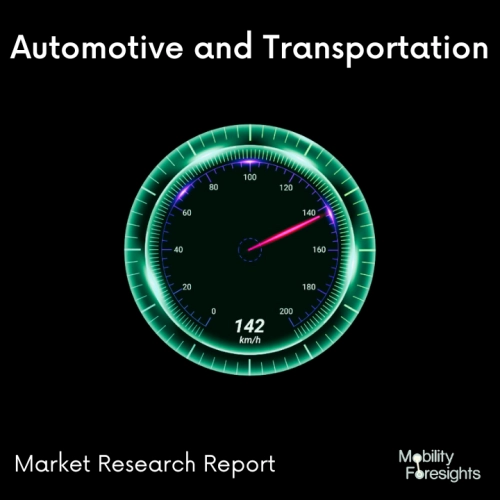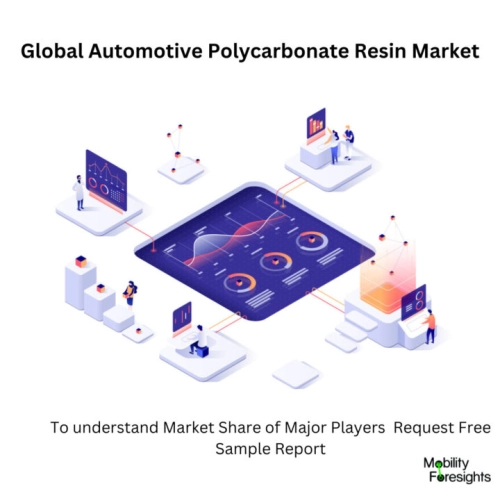
- Get in Touch with Us

Last Updated: Apr 25, 2025 | Study Period: 2023-2030
Polycarbonate, also known as PC resin, is a type of engineering plastic, which is a generic term for plastics that are specially designed for enhanced strength, temperature resistance, and other mechanical properties.
PC is commonly used for plastic lenses in eyewear, in medical devices, automotive components, protective gear, greenhouses, Digital Disks (CDs, DVDs, and Blu-ray), and exterior lighting fixtures.
Polycarbonates are manufactured by polymerization of bisphenol A (C15H16O2) and phosgene (COCl2).Polycarbonate products are often found in electronics which make use of their electrical insulating, heat-resistant and flame-retardant properties.
They may also be found in construction, transportation, aviation, and automotive applications. For example, their impact resistant, smooth surfaces make them well suited for use in automotive headlamp lens covers.

Global automotive polycarbonate resin market accounted for $XX Billion in 2022 and is anticipated to reach $XX Billion by 2030, registering a CAGR of XX% from 2023 to 2030.
Sabic Launches Automotive-Grade Resins with Recycled Content. Sabicâs first automotive grades containing mechanically recycled content are now available.
The new resins are: Sabic T2E-3320EH PPcompound, a high-flow, low-emission, talc-filled polypropylene (PP);Xenoy T2NX2500UV resin, an unfilled, UV-stabilised blend of polycarbonate (PC) and polyethylene terephthalate(PET);Xenoy T2NX5230 resin, a mineral-filled PC/PET blend.
All three materials contain up to 29% recycled content while offering performance similar to that of incumbent virgin resins, giving automotive customers new options that can help them address their sustainability goals.
âThe new Trucircle materials support the automotive industryâs sustainability initiatives by providing an opportunity to extend the life of plastic waste and helping to increase value from post-consumer products.
Sabic is launching the grades to support various new automotive applications.The Sabic T2E-3320EH PP compound features stiffness, low emissions, and high heat resistance for non-visible heating/ventilation/air conditioning (HVAC) components within the instrument panel, and interior and under-the-hood parts.
An internal life cycle assessment (LCA) showed that the PP compound reduces the productâs carbon footprint by up to 24% compared with the corresponding virgin PP compound because it contains 25% recycled PP.
| Sl no | Topic |
| 1 | Market Segmentation |
| 2 | Scope of the report |
| 3 | Abbreviations |
| 4 | Research Methodology |
| 5 | Executive Summary |
| 6 | Introduction |
| 7 | Insights from Industry stakeholders |
| 8 | Cost breakdown of Product by sub-components and average profit margin |
| 9 | Disruptive innovation in the Industry |
| 10 | Technology trends in the Industry |
| 11 | Consumer trends in the industry |
| 12 | Recent Production Milestones |
| 13 | Component Manufacturing in US, EU and China |
| 14 | COVID-19 impact on overall market |
| 15 | COVID-19 impact on Production of components |
| 16 | COVID-19 impact on Point of sale |
| 17 | Market Segmentation, Dynamics and Forecast by Geography, 2023-2030 |
| 18 | Market Segmentation, Dynamics and Forecast by Product Type, 2023-2030 |
| 19 | Market Segmentation, Dynamics and Forecast by Application, 2023-2030 |
| 20 | Market Segmentation, Dynamics and Forecast by End use, 2023-2030 |
| 21 | Product installation rate by OEM, 2023 |
| 22 | Incline/Decline in Average B-2-B selling price in past 5 years |
| 23 | Competition from substitute products |
| 24 | Gross margin and average profitability of suppliers |
| 25 | New product development in past 12 months |
| 26 | M&A in past 12 months |
| 27 | Growth strategy of leading players |
| 28 | Market share of vendors, 2023 |
| 29 | Company Profiles |
| 30 | Unmet needs and opportunity for new suppliers |
| 31 | Conclusion |
| 32 | Appendix |